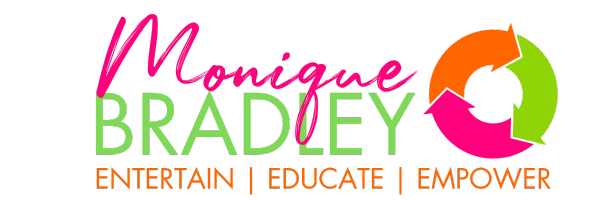Enhancing Workplace Communication

Enhancing Workplace Communication
In today’s fast-paced business world, the ability to communicate effectively isn’t just an asset; it’s a necessity for thriving organisational dynamics. Imagine a workplace where every conversation, every meeting, and every team collaboration is supercharged with clarity, understanding, and purpose. That’s the power of enhancing workplace communication. But why is this so crucial, and how can your organisation harness this power to unlock its full potential?
At the heart of any successful business lies a network of interactions – a web of conversations weaving through the corridors of offices, echoing in virtual meetings, and resonating in every email and report. The quality of these interactions can make or break the efficiency, morale, and overall success of an organization. This is where the art and science of enhancing workplace communication come into play, transforming your organization from the inside out.
Why is honing workplace communication essential?
Let’s paint a picture of the possibilities:
- Imagine teams where misunderstandings are rare, and collaborative solutions are the norm.
- Envision a workplace where employees feel heard, valued, and motivated, leading to better performance and higher job satisfaction.
- Picture an environment where interpersonal conflicts are significantly reduced, making way for a harmonious and productive workspace.
- Think of customer interactions that consistently end in satisfaction, bolstering your company’s reputation and growth.
The journey to achieving this communication utopia begins with understanding each team member’s unique personality, strengths, and challenges. It’s about recognising where they flourish and where they may need support. My approach utilises the groundbreaking profiling system of Wealth Dynamics and its business-focused counterpart, Talent Dynamics, to map out these intricacies.
What is Talent Dynamics?
Talent Dynamics isn’t just another personality test; it’s a pathway to unlocking Trust and Flow within your business. Trust is the bedrock of value in your enterprise, directly impacting revenue and employee security. Flow represents the path of least resistance, where productivity soars, and job satisfaction skyrockets. When team members operate in Flow, they are in harmony with their natural talents, overcoming obstacles effortlessly, and contributing to an engaged and efficient workplace.
But that’s just the beginning. My training delves deeper into understanding the diverse needs and values of each team member, exploring communication styles (Visual, Auditory, Kinaesthetic), and implementing the revolutionary Conscious Communication system. This system, rooted in the teachings of Carl Jung, brings about positive resolutions through mindful language choices, affecting not just workplace interactions but personal ones as well.
Enhancing workplace communication is about creating a culture where every voice is heard, every contribution is valued, and every interaction is an opportunity for growth and collaboration. It’s about transforming your workplace into a dynamic, cohesive, and thriving environment.
Would your organisation benefit from
- better interpersonal, team and department communication skills?
- better performance, increased employee retention and job satisfaction?
- reduced interpersonal workplace conflicts?
- improved overall workplace or customer satisfaction?
- learning valuable tools and methods for problem-solving difficulties?
That’s where this training can help.
The first step is to understand each participants unique personality, where they flourish in a team and where they flounder. For this, we utilise a profiling system called Wealth Dynamics and specifically its tool designed for businesses and teams: Talent Dynamics. Talent Dynamics is the Number 1 Business Development pathway for accelerating Trust and Flow in a business.
What is Trust and Flow all about and how can this Training help your Organisation?
Trust is a measurement of how much value you bring to the table in your business and career. If a consumer has trust in your company and the product or service that you deliver, this easily translates to increases in your revenue – as the higher the trust is, the more sales are made.
Similarly, if you add value to your role within a team or to the enterprise you work for, then your individual position remains safe into the future. It is only when you stop adding value and others begin to feel that they cannot trust you to deliver or that you aren’t delivering, that your place in the enterprise diminishes or even dissolves completely. Talent Dynamics is a tool which highlights where each individuals value lies, how you can tap into it, and how you can communicate and share it with others.
Flow can be thought of as the path of least resistance, where you add the most value and get the most done. When we are in Flow our actions become effortless, we are in harmony with our natural talents, obstacles are easily overcome, actions are completed and our sense of enjoyment and productivity increase, meaning better retention and more engaged staff, enhancing productivity.. In contrast, when we are out of Flow you can feel a sense of overwhelm, anxiety and unhappiness.
The next step is to highlight how everyone within the team environment has not only different value to add to the workplace, but also has different needs.
At this stage, I explore your teams’ dynamics utilising interactive activities to highlight differences and showcase different styles of leadership. This is the perfect opportunity to highlight how everyone’s view of the same problem, and its solution, is as unique as their personality and how harmony and productivity can be enhanced by putting the right person in the right role.
Learning Styles
From here I explore the traditional communication styles: Visual, Auditory and Kinaesthetic, highlighting how inputting information or receiving direction is different for everyone – and equally as different when it comes to sharing that information with others.
I share the Communication and Learning Matrix, plotting every team member into the grid, showcasing their unique style of communication and their needs when it comes to taking direction from others. This alone enables better flow of communication within the workplace as everyone knows what they need for better performance.
Conscious Communication
Finally, I finish with a session on ‘Conscious Communication’ – a language system developed by educationalists, based on the theories of Philosopher Carl Jung.
Conscious Communication is about bringing a win/win situation to life using particular language choices. It’s a way of becoming mindful around what you speak about, what you say to colleagues or to family members you are nurturing and developing into great people.
And, most importantly, it’s about what you say to yourself.
This language system is easy for people of any age to use, to bring about positive resolutions for themselves and those around them and has come from years of research into the use of psychological archetypes and studies in human behaviour. AND it works for everyone – children, parents, staff, partners, husbands and wives. It’s all about understanding what we say and when and how we say it.
Keen to find out more? Get in touch!

